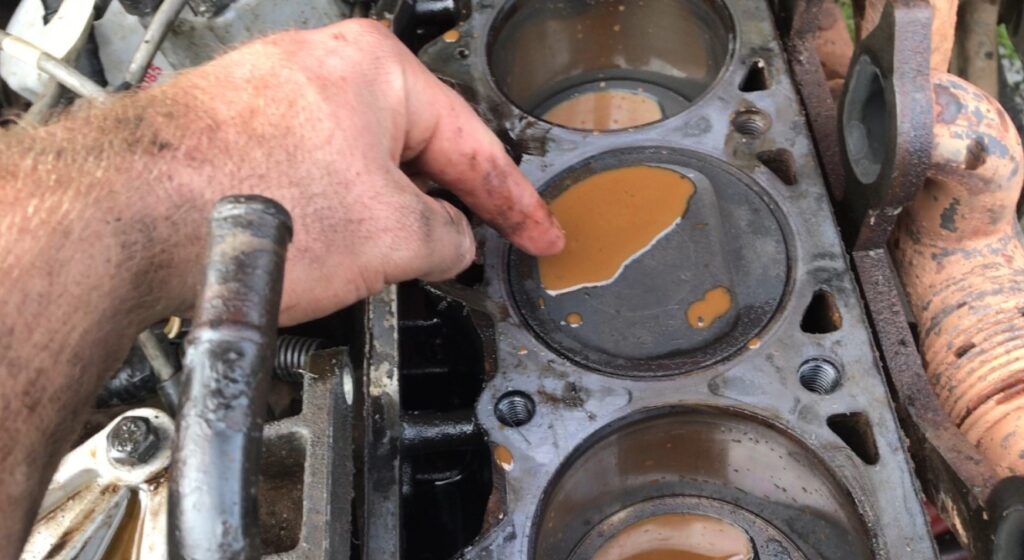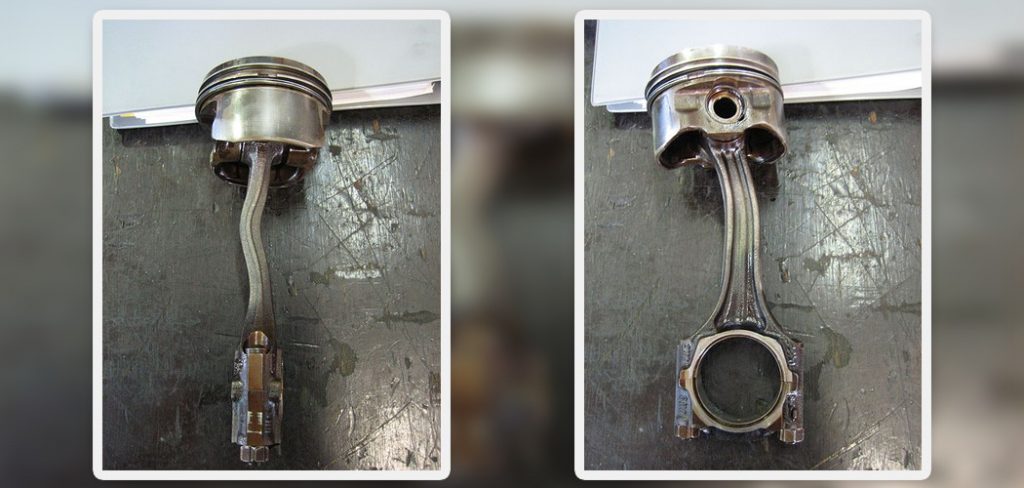Introduction
A hydrolocked diesel engine is a severe and potentially catastrophic condition that can occur when liquid, typically water, enters the combustion chamber. This can happen in various ways, including through a cracked cylinder head, a damaged intake manifold, or faulty seals. When liquid enters the cylinder, it cannot compress, causing a sudden and extreme pressure buildup that can bend or even break engine components. This article will provide a comprehensive guide on how to diagnose, repair, and prevent a hydrolocked diesel engine.

Image: www.turbochaos.com
Diagnosing a Hydrolocked Diesel Engine
The symptoms of a hydrolocked diesel engine are quite distinct:
- Inability to start the engine or difficulty cranking
- White or clear smoke from the exhaust
- Bubbling or gurgling sounds from the engine
- Loss of power or engine stall
- Leaking coolant or water around the engine
If you suspect your diesel engine may be hydrolocked, immediately stop attempting to start it to prevent further damage.
Understanding How a Diesel Engine Works
To understand how hydrolocking occurs, it’s important to grasp how a diesel engine operates:
- Fuel Injection: Diesel engines do not use spark plugs to ignite the fuel mixture. Instead, fuel is injected directly into the combustion chamber at high pressure shortly before the compression stroke reaches its peak.
- Compression Stroke: The piston moves upward, compressing the air inside the cylinder to extremely high temperatures and pressures.
- Power Stroke: As the air is compressed, the diesel fuel is injected into the cylinder. The intense heat and pressure cause the fuel to ignite spontaneously, releasing a massive amount of energy that forces the piston downward, generating power.
The Causes of Hydrolocking
Any scenario where liquid enters the combustion chamber can lead to hydrolocking in diesel engines:
- Cracked Cylinder Head: This allows coolant or water to seep into the cylinders.
- Damaged Intake Manifold: This enables water or rainwater to be sucked into the engine.
- Faulty Seals: Worn or damaged gaskets or O-rings allow liquids to bypass their intended paths and enter the combustion chamber.
- Leaking Fuel Injector: In rare cases, a faulty fuel injector can cause excess fuel to leak into the cylinder, creating a hydrolocking condition.
- Extreme Flooding: If the engine is subjected to severe flooding conditions, water may be drawn into the air intake and eventually into the combustion chamber.

Image: diyquickly.com
Repair Procedures for a Hydrolocked Diesel Engine
Repairing a hydrolocked diesel engine is a complex and potentially costly procedure, requiring expertise and specialized tools. The general steps involved are as follows:
1. Remove Excess Liquid
- Disconnect the battery.
- Remove the spark plugs or glow plugs (if equipped).
- Turn the engine over by hand using a wrench on the crankshaft pulley to expel excess liquid.
2. Inspect and Replace Damaged Components
- Remove the cylinder head and inspect for cracks or damage.
- Check the intake manifold and seals for leaks or defects.
- Replace any damaged components.
3. Clean and Reassemble
- Thoroughly clean the engine block, cylinder head, and all components to remove any remaining liquid or debris.
- Reassemble the engine, ensuring that all seals and gaskets are replaced.
4. Prime the Engine
- Crank the engine several times without starting it to circulate oil throughout the system.
- Install new spark plugs or glow plugs (if removed).
5. Start the Engine and Monitor
- Start the engine and let it run at idle for a few minutes.
- Monitor the engine for any unusual sounds or vibrations.
- Check for leaks or fluid loss.
How To Fix Hydrolocked Diesel Engine
Preventing Hydrolocking
Preventing hydrolocking is crucial to safeguard your diesel engine’s longevity. Here are some measures you can take:
- Ensure all seals and gaskets are in good condition and replace them if necessary.
- Inspect the intake manifold and air filter regularly for damage or debris.
- Do not operate the engine in deep water or during heavy rain.
- Use a splash shield to prevent water from splashing into the intake.
- If your vehicle is flooded, avoid attempting to start it







